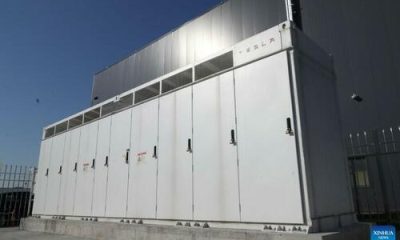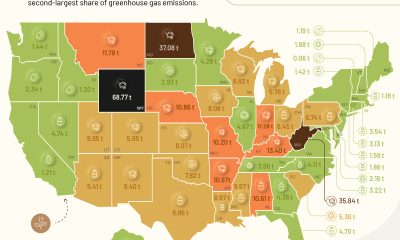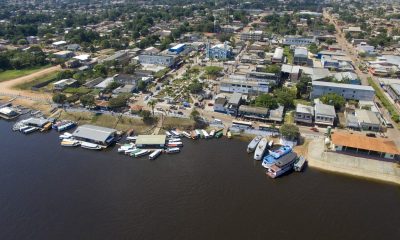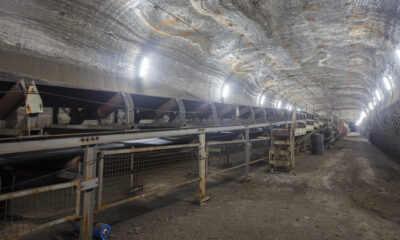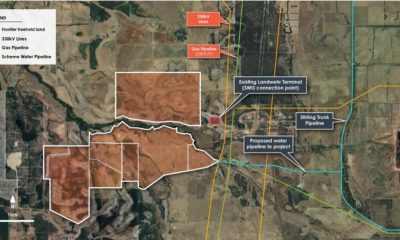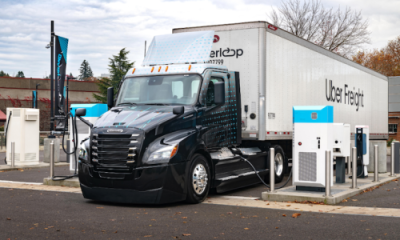Energy & Critical Metals
A Visual Crash Course on Geothermal Energy
This infographic teaches you everything you need to know about geothermal energy in less than 5 minutes.
The post A Visual Crash Course on Geothermal Energy…
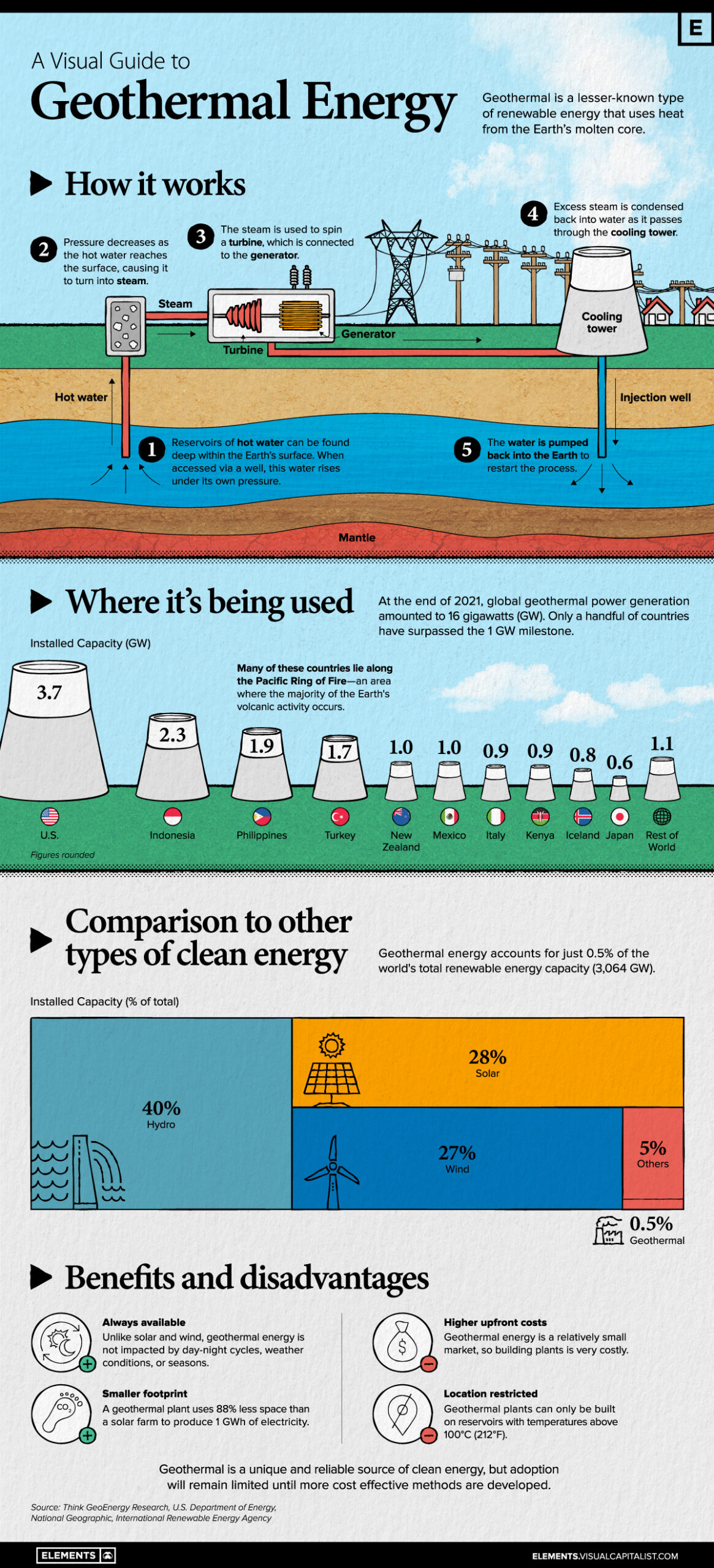
Subscribe to the Elements free mailing list for more like this

Yes. Visualizations are free to share and post in their original form across the web—even for publishers. Please link back to this page and attribute Visual Capitalist.
Licenses are required for some commercial uses, translations, or layout modifications. You can even whitelabel our visualizations. Explore your options.
Click here to license this visualization.
A Visual Crash Course on Geothermal Energy
This was originally posted on Elements. Sign up to the free mailing list to get beautiful visualizations on natural resource megatrends in your email every week.
Geothermal is a lesser-known type of renewable energy that uses heat from the Earth’s molten core to produce electricity.
While this unique feature gives it key benefits over solar and wind, it also suffers from high costs and geographic restrictions. Because of this, few countries have managed to produce geothermal energy at scale.
In this infographic, we’ve used a combination of diagrams and charts to give you a high level overview of this sustainable energy source.
How Geothermal Works
Geothermal energy is produced by accessing reservoirs of hot water that are found several miles below the earth’s surface. In certain parts of the planet, this water naturally breaks through the surface, creating what’s known as a hot spring (or in some cases, a geyser).
When accessed via a well, this pressurized water rises up and rapidly expands into steam. That steam is used to spin a turbine, which then drives an electric generator.
Further along the process, excess steam is condensed back into water as it passes through a cooling tower. An injection well pumps this water back into the Earth to ensure sustainability.
Where Is Geothermal Energy Being Used?
As of 2021, global geothermal power generation amounted to 16 gigawatts (GW). Only a handful of countries have surpassed the 1GW milestone.
| Country | Installed Capacity (GW) |
|---|---|
| U.S. | 3.7 |
| Indonesia | 2.3 |
| Philippines | 1.9 |
| Turkey | 1.7 |
| New Zealand | 1 |
| Mexico | 1 |
| Italy | 0.9 |
| Kenya | 0.9 |
| Iceland | 0.8 |
| Japan | 0.6 |
| Rest of World | 1.1 |
To give these numbers context, consider the following datapoints:
- America’s 3.7 GW capacity is split across 61 geothermal plants.
- The world’s largest solar plant, the Bhadla Solar Park, has a maximum output of 2.2 GW
- The world’s largest hydroelectric plant, the Three Gorges Dam, can produce up to 22.5 GW
While geothermal plants clearly produce less power, they do have benefits over other types of renewables. For example, geothermal energy is not impacted by day-night cycles, weather conditions, or seasons.
The Big Picture
We now look at a second dataset, which shows the global contribution of each type of renewable energy. These figures are as of April 2022, and were sourced from the International Renewable Energy Agency (IRENA).
| Type | Installed Capacity (% of total) | Installed Capacity (GW) |
|---|---|---|
| Hydro | 40% | 1226 |
| Solar | 28% | 858 |
| Wind | 27% | 827 |
| Others (Geothermal) |
5% (0.5%) |
153 (15*) |
| Total | 100% | 3064 |
*Geothermal’s total capacity in this dataset differs from the previous value of 16GW. This is due to differing sources and rounding.
One reason for the slow adoption of geothermal energy is that they can only be built in regions that have suitable geological features (such as places where there is volcanic activity).
To expand on that point, consider the following data from Fitch Solutions, which shows the forecasted growth of geothermal energy capacity by region.
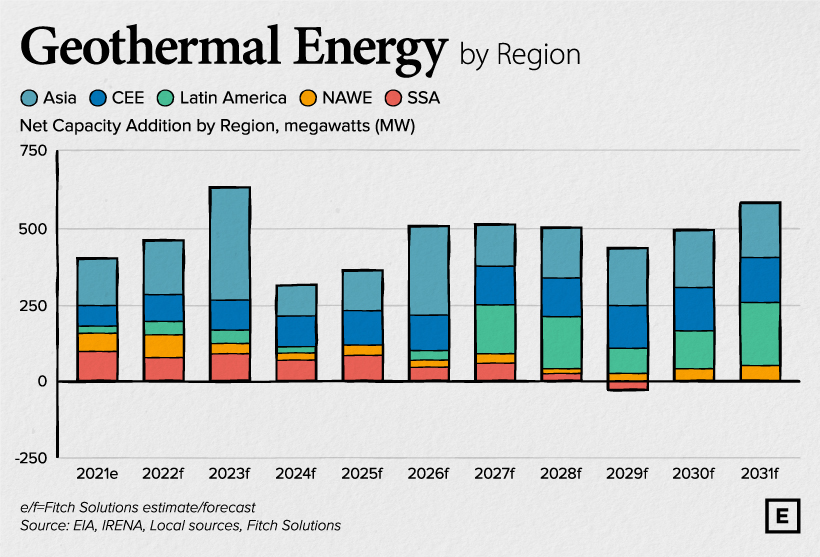
Fitch believes that over the next decade, the majority of new geothermal capacity will be installed in Asia. On the flipside, investment in North America and Western Europe (NAWE) is expected to decrease.
Over the coming years, NAWE will experience a gradual slowdown in geothermal capacity additions as we expect that investments will be crowded out by cheaper wind and solar projects.
– Fitch Solutions
The top markets for geothermal are expected to be Indonesia, the Philippines, and New Zealand, which all lie along the Pacific Ring of Fire. The Ring of Fire is a path along the Pacific Ocean where the majority of volcanic activity occurs.
The post A Visual Crash Course on Geothermal Energy appeared first on Visual Capitalist.

Uranium Exploration Company Announces Additional Staking in the Athabasca Basin
Source: Streetwise Reports 12/22/2023
Skyharbour Resources Ltd. announced an update from its Canada-based Falcon Project along with additional…
Tesla Launches New Mega Factory Project In Shanghai, Designed To Manufacture 10,000 Megapacks Per Year
Tesla Launches New Mega Factory Project In Shanghai, Designed To Manufacture 10,000 Megapacks Per Year
Tesla has launched a new mega factory…
Giving thanks and taking stock after “a remarkable year”
An end-of-year thank you to our readers, industry colleagues and advertisers before Electric Autonomy breaks from publishing until Jan. 2
The post Giving…

